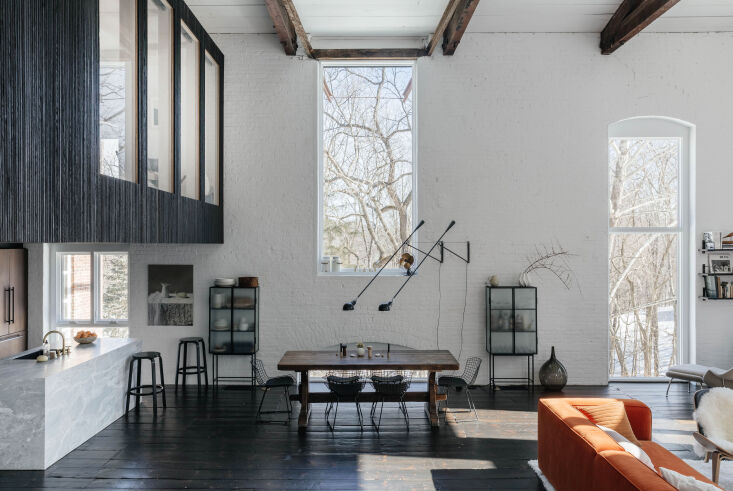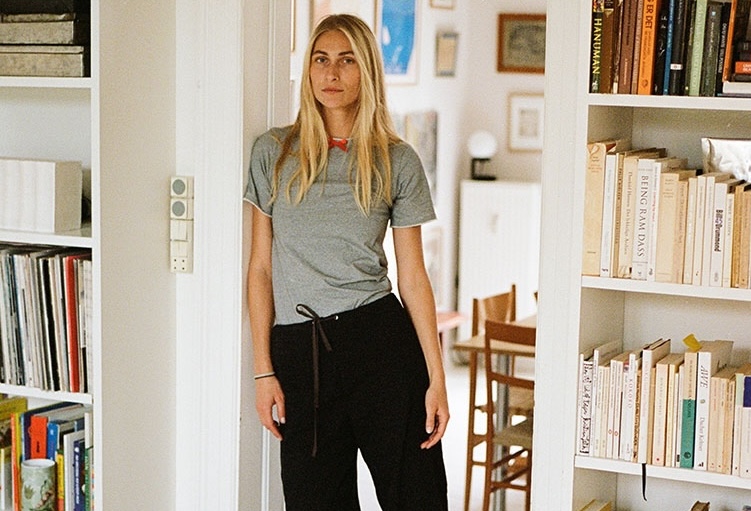When a pair of New Yorkers—a still life photographer and a humanitarian aid worker at the U.N.—were looking for a place to decompress in nature, they stumbled on an unlikely contender: an old iron foundry called the Clover Hill Foundry, original built in the early 1890s.
Tucked on a hill in Somers, New York, the series of interconnected buildings were built to serve as part of an iron mine, but for reasons that remain somewhat of a mystery, they were closed and abandoned not long after—”possibly,” according to architect Ravi Raj—”due to a larger scam operation.” The buildings fell into disrepair (and, according to the Somer Historical Society, the mine shaft became a local favorite swimming hole) until the 1940s, when a trio of artists converted the buildings into separate residences, keeping—fortunately—many of the original details intact.
Fast forward to the 21st century: The New York couple was taken by the spareness of the space and the way the windows framed views of the surrounding trees. To update the foundry for modern life, the duo enlisted a friend, Brooklyn-based architect Ravi Raj, who had worked with Adjaye Associates before starting his own studio.
With care, Ravi preserved the foundry’s original brick walls and wooden beams, hewed to a stripped-back palette, then rearranged a few key spaces and added a “modern volume” suspended within the soaring space. Join us for a look.
Photography by Nick Glimenakis, courtesy of Ravi Raj Architect, except where noted.













It’s perhaps worth noting, given that there are two wood-burning stoves in this residence, that cast iron stoves are very much a part of New York history: The towns of Albany and Troy, further upstate, were once two of the most prolific producers of these stoves in the world. Read more about that history—and the sometimes elaborate designs—via the Albany Institute of History & Art.


For more on the project and “before” shots—some dating back as far as the turn of the century—head to @clover_hill_foundry on Instagram.
And for more historic structures redone as residences, see:
- The Engine House: A Romantic Rescue in the English Countryside (Available for Getaways)
- Kitchen of the Week: A Noir Canteen in a Repurposed WWII Control Tower
- Lessons in Reinvention: A Victorian Girls’ School Reborn





Have a Question or Comment About This Post?
Join the conversation